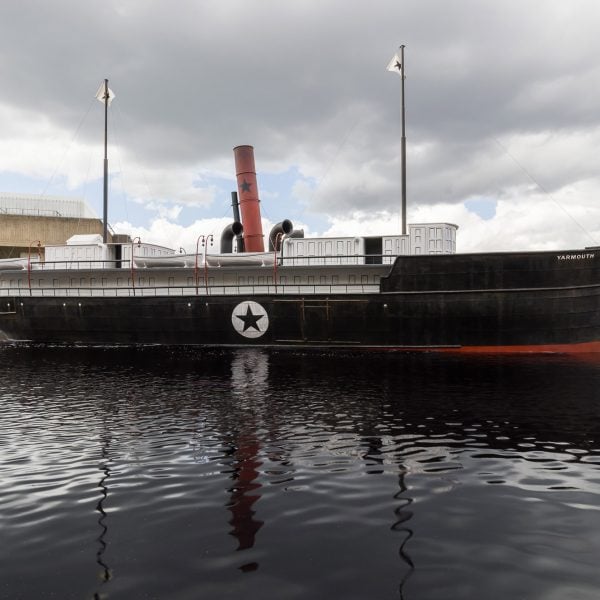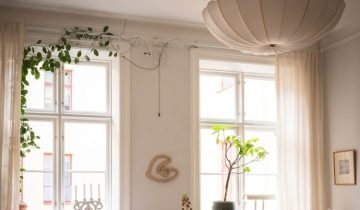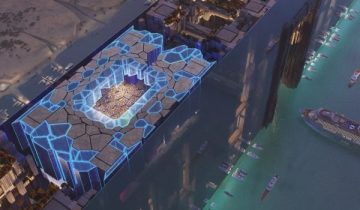Bahamian artist Tavares Strachan has positioned a large-scale model of a ship in a rooftop pond at London’s Hayward Gallery, forming an outdoor installation to accompany his current art exhibition There Is Light Somewhere.
The installation is a replica of SS Yarmouth – the flagship of the former Black Star Line, the first Black-owned shipping company in North America established by the Jamaican political activist Marcus Garvey in 1919.
Strachan recreated the seminal vessel using a combination of aluminium, fibreglass and painted wood. The result is a 14-metre-long, ship-like structure installed on a rooftop terrace at the Hayward Gallery on South Bank.
The terrace was filled with 30 cubic metres of water for the project – a feat signed off by local engineering firm Arup, which ensured that the installation was within the weight threshold for its location.
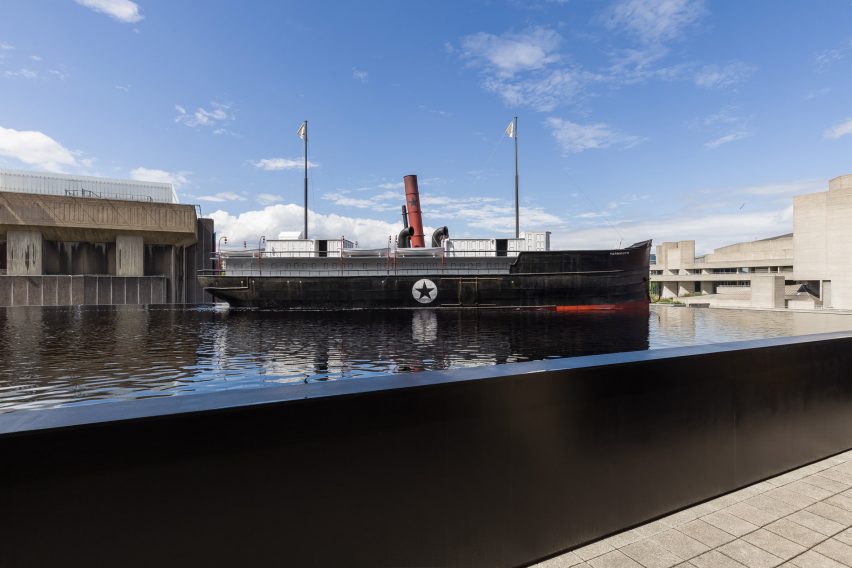
Perched atop the gallery’s rooftop pool, the ship replica gives the impression of a vessel at sea.
Garvey originally founded the Black Star Line to facilitate international commerce among Black communities and later hoped to repatriate enslaved African Americans and their descendants by providing a route to Africa.
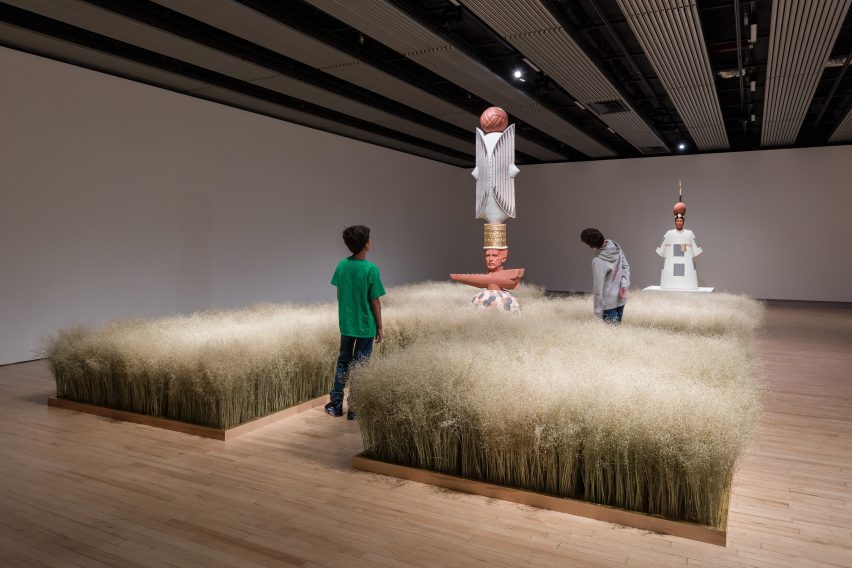
While the shipping company ceased sailing in 1922, it has remained a powerful symbol of pan-Africanism.
“The Black Star Line was established as a way to connect people from the diaspora to Africa,” Strachan told Dezeen.
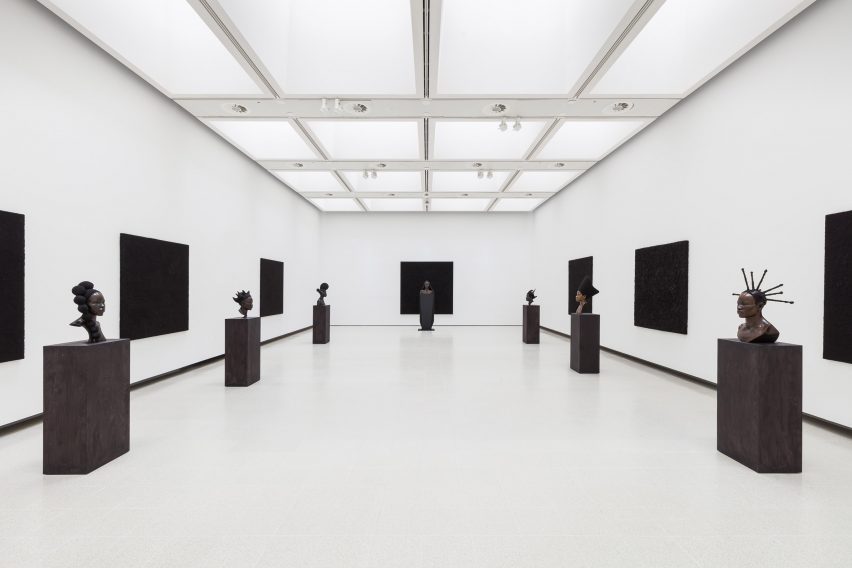
Although he couldn’t currently reveal more information, the artist said he plans to reopen the Black Star Line to support Black-owned businesses worldwide.
The ship replica was positioned to echo the themes of Strachan’s exhibition, currently showing inside the gallery.
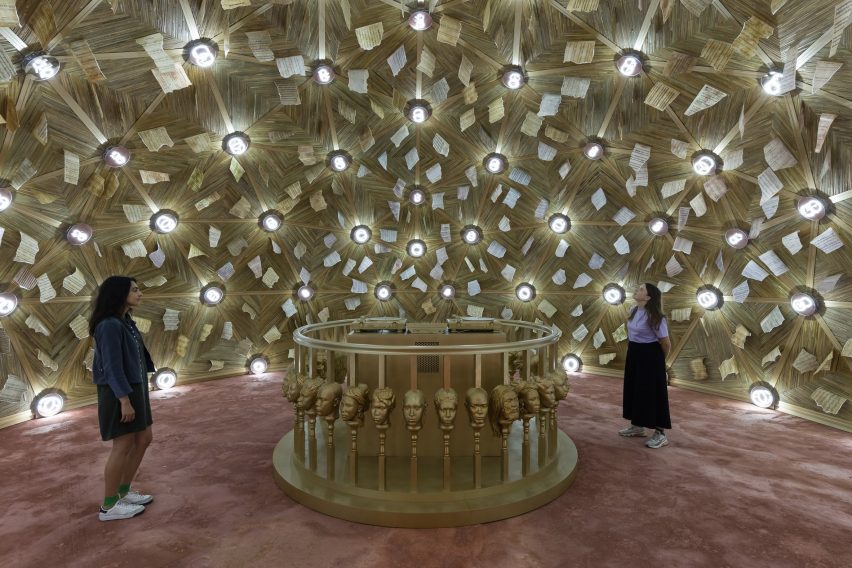
There Is Light Somewhere is “a multi-sensory exhibition” incorporating a range of sculptures, large-scale collages and other mixed-media installations that explore questions surrounding cultural visibility.
“Dedicated to telling ‘lost stories’, Strachan celebrates unsung explorers and neglected cultural trailblazers, inviting audiences to engage with overlooked characters whose lives illuminate histories hidden by bias,” said the Hayward Gallery.
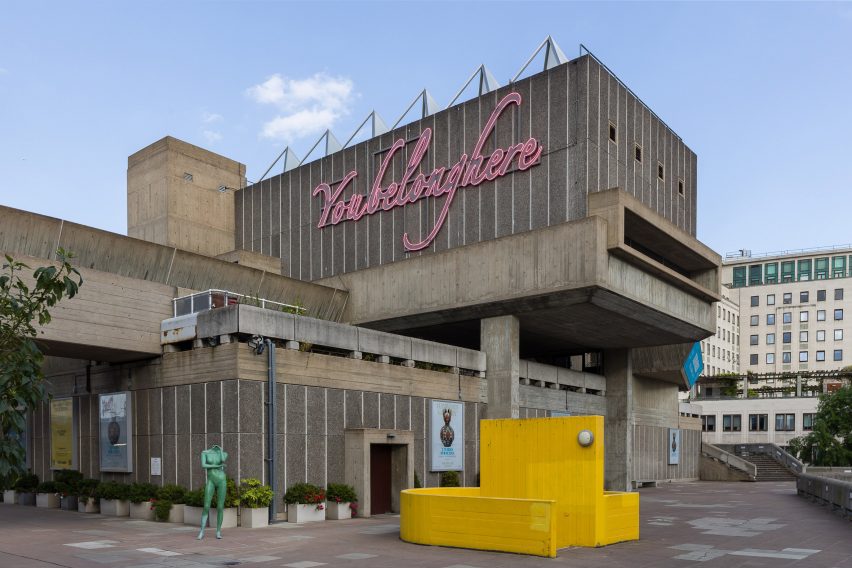
“I love to present ideas around world-making,” the artist said of his show.
“The installations in this exhibition pose questions about what happens when a viewer enters a world with their own internal logic,” he added.
As well as the ship replica, a vast neon installation displaying the words You belong here has been mounted to one of the gallery’s brutalist facades, creating a beacon that reinforces the exhibition’s themes.
An oversized bronze head depicting Garvey, entitled Ruin of a Giant, can also be found outside the gallery’s main entrance.
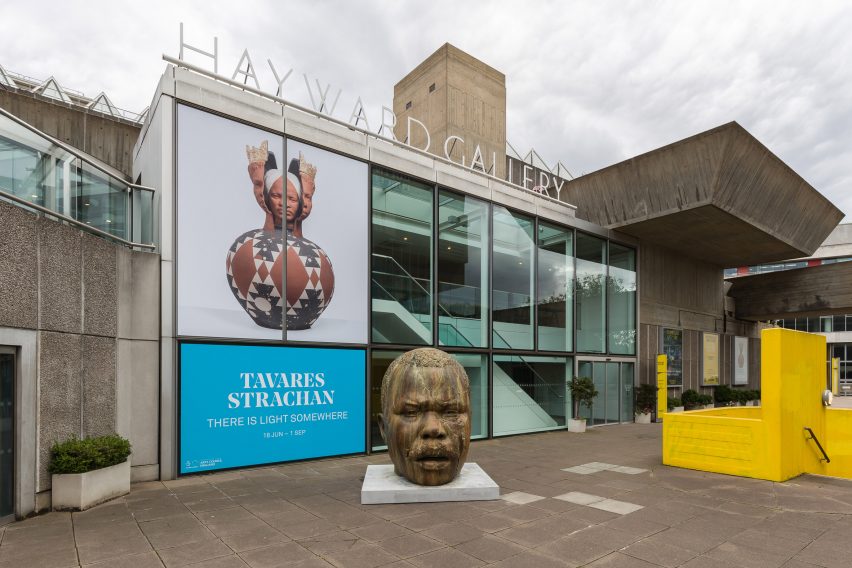
“Public artwork is always an opportunity to draw people into conversations via their own curiosity,” said Strachan, considering the impact of large-scale sculptures.
“There is no expectation for the public to know what the work ‘means’. Instead, it allows everyone to participate in a dialogue about their community.”
“I have no specific desire for how folks respond to the show,” he added.
“Hopefully, people enjoy the experience and it motivates them to think about the world in a different way.”
The Hayward has been home to various installations. In 2015, Belgian artist Carsten Höller added a pair of spiral slides to the side of the gallery.
In more recent installation news, Chinese architecture studio MAD has recently created Ephemeral Bubble – an installation designed to resemble a bubble being blown by a century-old wooden house, for the Echigo-Tsumari Art Triennale in Japan.
The photography is by Mark Blower and the video is courtesy of Southbank Centre.
There is Light Somewhere is showing at the Hayward Gallery from 18 June to 1 September 2024. See Dezeen Events Guide for an up-to-date list of architecture and design events taking place around the world.

